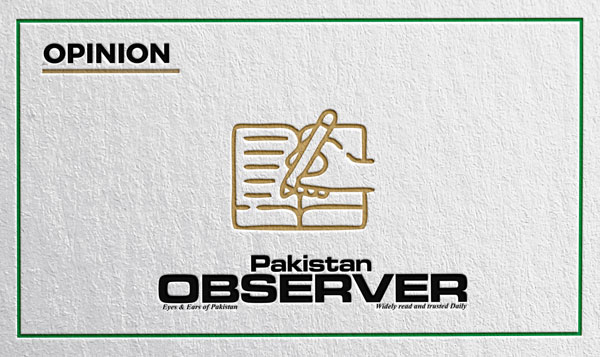Articles and letters may be edited for the purposes of clarity and space.
Harmony in shared sorrow
No congratulation is enough for the residents of Subhrajpur village of Nadia district of West Bengal for rushing to the home of Manjushree Mandal following her death due to cerebral attack.
In these blatant selfish times when cooperative attitude towards fellow human beings itself are turning rare in today’s society, the warmth displayed in Subhrajpur attains greater significance as the Mandals were the only Hindu family among the 370 Muslim families in the village! The news of death of Manjushree at a hospital arrived just before the break of dawn when the residents were preparing for sehri in this ongoing month of Ramjan!
Immediately Abu Sufian – – Imam of the local Jama Mosque – – advised the villagers, during morning prayers, to rush to the Mandal household and organise the last rites of the deceased lady by taking her to crematorium. After the faithful prayed for soul of Manjushree, they duly completed all arrangements for the last rites. The Imam also appealed to all to help the Mandal family for the shraddho rituals (in honour the deceased soul) as well which take place after almost a fortnight!
The overwhelmed widower Sanat Mandal strikes the nail hard upon our conscience – – “Such kindness is part of Bengal’s tradition. It is sad that this has now become a talking point, given all the hatred all around”!
Indeed a very natural and desirable act of lending cooperative hand towards individuals in distress forms the very basic essence of humanity. Yet these incidents are being called for attention just due to the context of religious hatred cutting across the global society! The merchants of hatred are in urgent need of drawing lesson as well as inspiration from the divine acts of the humanitarians of Subhrajpur.
KAJAL CHATTERJEE
Kolkata, India
Hospitals?
Cancer is considered one of the most dangerous diseases, capable of devastating human lives physically and mentally. It manifests in various forms, such as mouth cancer, often caused by tobacco and alcohol, prevalent in our society. Both tobacco and alcohol contain carcinogenic chemicals that damage our DNA, ultimately leading to cancer.
A majority of people indulge in smoking and drinking harmful substances, which pose serious health risks. Individuals who engage in these habits are frequently diagnosed with mouth cancer, yet there is a glaring absence of proper treatment available for it. It’s disheartening to note that Balochistan lacks cancer hospitals and the authorities seem hesitant to take action.
We earnestly appeal to the health authorities to establish cancer hospitals in the region. This is crucial to saving the lives of thousands of people afflicted by such diseases.
Moving forward, we also draw attention towards Hoshab city, located 170 km away from Turbat, which lacks hospitals in this modern era. Despite a significant increase in the city’s population, the absence of even a single hospital leaves citizens in distress.
Residents are forced to journey to Turbat city for medical treatment, which proves especially burdensome for those who cannot afford such trips, particularly for minor ailments. Therefore, we implore the government of Balochistan to establish a hospital with well-qualified doctors in Hoshab city to ensure the well-being of its people.
SHARAN SHAH,
AYESHA NOOR
Via-email
Inclusive infrastructure in education
Inclusive infrastructure in education includes physical facilities, technological resources, and supportive environments that fulfil the needs of all learners, regardless of their abilities, backgrounds, or circumstances. It goes beyond more accessibility to create systems that foster equitable opportunities for participation, learning, and growth for every individual.
Physical infrastructure plays a crucial role in ensuring inclusivity in education. This involves constructing buildings, classrooms, and facilities that are accessible to individuals with disabilities, such as ramps, elevators, and wheelchair-friendly entrances.
Moreover, it extends to creating friendly environments for neurodiverse students, incorporating elements like quiet zones, adjustable lighting, and comfortable furniture to accommodate their unique learning preferences.
Inclusive infrastructure embraces the integration of technology to enhance learning experiences and accessibility. This includes providing students with technologies like screen readers, speech-to-text software, and tactile learning aids to facilitate their need to educational content.
Additionally, ensuring reliable internet connectivity and digital resources enables remote learning opportunities, especially for students in rural or underserved areas who may face geographical barriers to accessing traditional educational institutions. Furthermore, fostering a supportive and inclusive environment within educational institutions is essential for promoting the holistic development of all learners.
This involves implementing policies and practices that promote diversity, equity, and inclusion, such as anti-discrimination measures, culturally responsive teaching approaches, and inclusive curriculum frameworks that reflect the experiences and perspectives of all learners.
Additionally, providing training and professional development opportunities for educators on inclusive teaching strategies and classroom management techniques can help create classrooms where every student feels valued and supported.
SABA SHAFI
Karachi
Box letter
PhD degree
Pakistani student Maha Yusuf received a PhD degree in Chemical Engineering from Stanford University California. Maha Yusuf, who belongs to Jhang district of Pakistan, became the first Pakistani woman to do Ph.D in Chemical Engineering. Her research topic at Stanford University was the use of advanced imaging diagnostic tools to understand the failure mechanisms of fast-charging lithium-ion batteries. The talented student Maha Yusuf has also been selected by Princeton University of America for “Presidential Post Doctorate 2023. Earlier, Maha Yusuf did her MS in Chemical Engineering from Stanford University in 2017. While in 2013, she received a bachelor’s degree in chemical engineering from the NUST University of Pakistan. Before joining Stanford University, Maha Yusuf worked as a drilling engineer in oil and gas in Columbia. Seven of her research papers have been published in international journals. Apart from holding two patents, she has also received many awards in her field.
MALIK TARIQ ALI
Lahore










